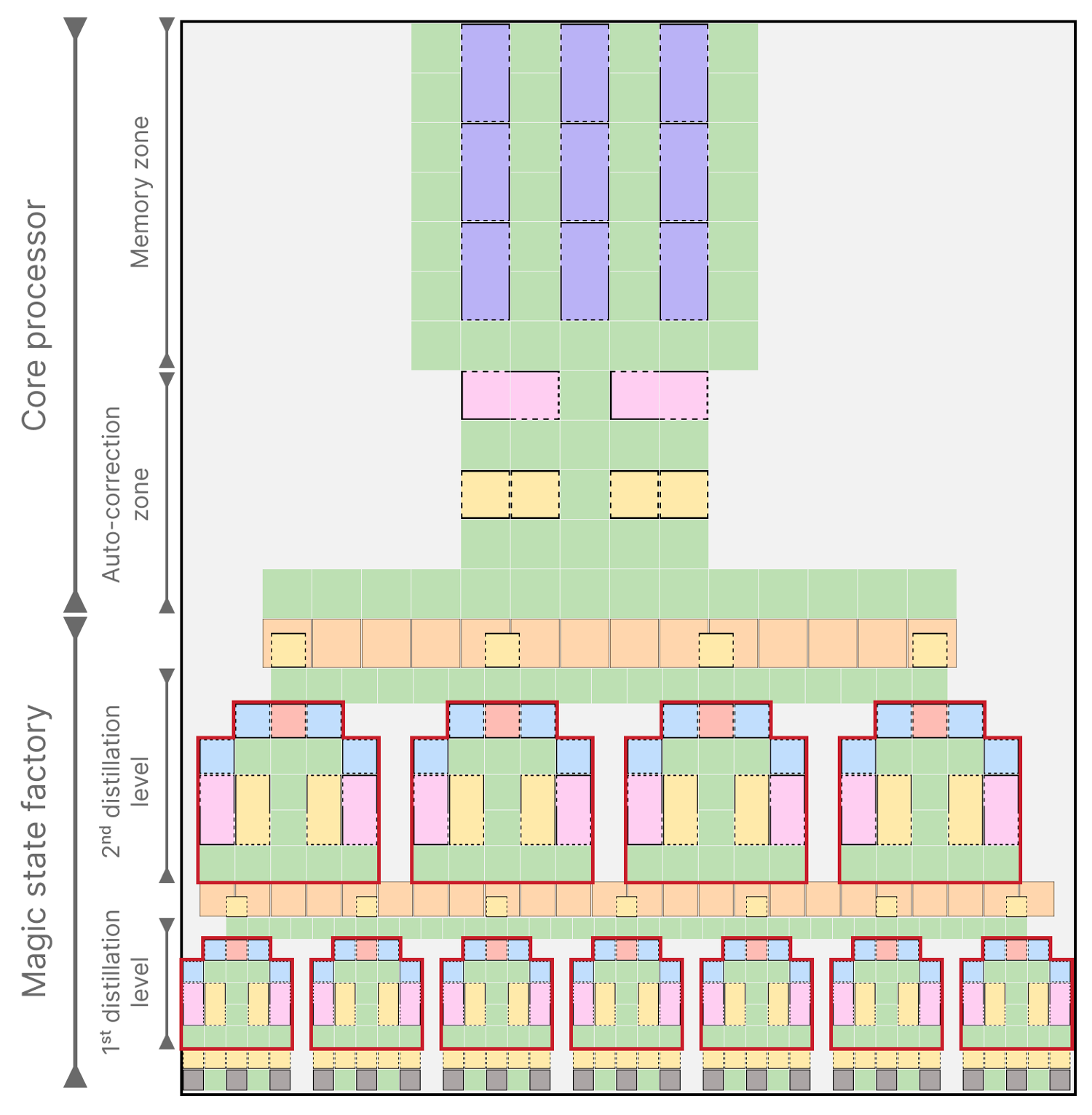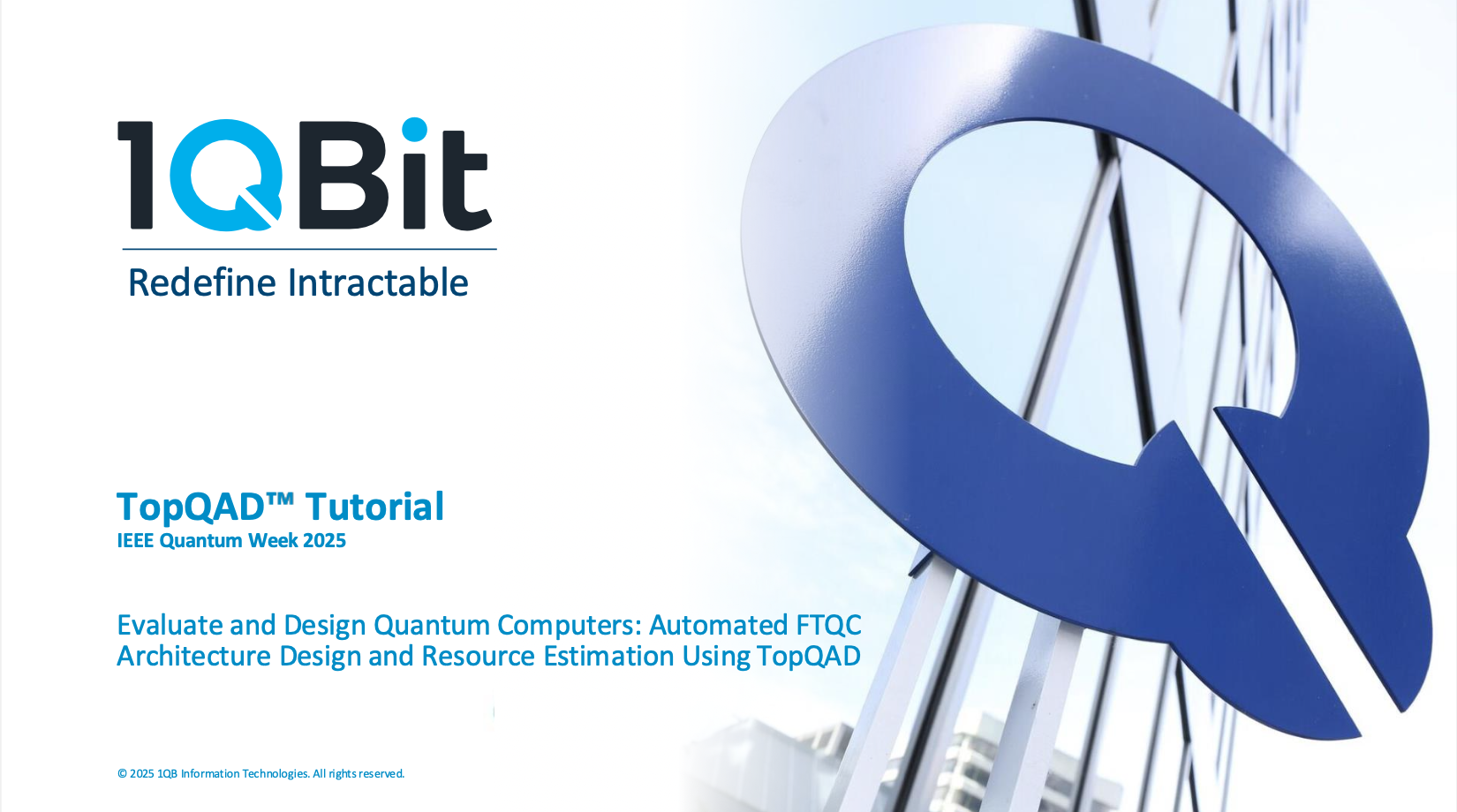TopQAD™ Tutorial at IEEE Quantum Week 2025
September 2, 2025
Sign-up, Agenda, and Participant Resources
Presenting TopQAD at IEEE Quantum Week 2025
1QBit will be presenting our product, TopQAD, at QCE25 in TUT21 – Evaluate or Design Quantum Computers: Automated FTQC Architecture Design and Resource Estimation Using TopQAD.
Participant Resources | Tutorial Agenda | Summary, Abstract, & Audience

Hands-on Experience with TopQAD
The tutorial offers hands-on experience with TopQAD. Audience members will have the opportunity to activate a free TopQAD account in the tutorial. This is a limited offer, available to QCE25 attendees only. Once activated, access can be kept for a limited time following the conference (details on this will be announced in the tutorial). Bring your laptop or use your phone if you wish to create an account and retain access for later use. A laptop is recommended if you wish to follow along with the SDK examples.
To ensure you are able to follow along with the interactive portions of the tutorial hands-on, please review the Participant Resources section in advance of the tutorial.
Summary, Abstract, & Audience
See TUT21 on Tuesday, September 2 on the QCE website.
Participant Resources
Tutorial Presentation Handout
Download the tutorial presentation handout here.
Set up and Install TopQAD before the Tutorial
Depending on what platforms you are used to working with, setting up to use TopQAD may take some time. Complete the following steps in advance to ensure you can follow along hands-on during the TopQAD tutorial:
- MFA app: Ensure you have a multi-factor authentication (MFA) app, such as Google Authenticator, installed.
- TopQAD account: Sign up online via the TopQAD portal. You can create an account now, and our team will guide you in activating it during the tutorial (see the agenda below). Note: we are making some enhancements to the portal before the event; if you see the page is not available please check again soon!
- Email verification: Follow the steps in the TopQAD portal to verify your email.
- Accept terms and policies: Follow the steps in the TopQAD portal to accept the terms and policies (required to use TopQAD).
- SDK: For more technical audience members, we invite you use the TopQAD SDK; however, this is not required to use the TopQAD portal.
- Get familiar with Juypter Notebook: Juypter Notebook will be installed with the TopQAD SDK (if you do not already have it). If you are not already familiar with it you can take a look at this page in advance.
- Install the TopQAD SDK: The SDK will be made available shortly before the tutorial. Check here for details and updates.
TopQAD Documentation
The documentation is available here.
Tutorial Day Notes
Come to the tutorial to activate your account. Bring your laptop or use your phone to follow along in the hands-on portions of the tutorial.
Agenda
Session 1
Preliminary remarks (2 min, Tamiko Masuda)
A brief introduction to the TopQAD beta access that 1QBit is offering audience members and how to get the most out of this tutorial.
Resource estimators of today, operating systems of the future (20 min, Pooya Ronagh)
An introduction to automated fault-tolerant quantum computation (FTQC) architecture design, compilation, assembly, noise profiling, and error analysis.
TopQAD account creation and activation (10 min, Katie Olfert)
The audience will be invited to create a TopQAD account and assisted with its activation free of charge. This is a limited-time offer. To ensure you are able to participate, please follow the instructions above under Hands-on Experience with TopQAD.
Fault-tolerant compilation (25 min, Zak Webb)
An introduction to quantum error correction and FTQC. The key topics include: the need for error correction and logical qubits, surface codes and FTQC with magic states, trade-offs for transpiling Clifford gates, scheduling requirements for interactions, and magic state preparation and distillation.
Design and optimization of an FTQC architecture (25 min, Allyson Silva)
A technical dive into various FTQC modules, their roles, and interactions; design requirements for meeting a target error budget; and techniques for analyzing space, time, and accumulated error trade-offs.
Interaction with the TopQAD portal (8 min, Allyson Silva and Katie Olfert)
A demonstration of the TopQAD portal will be conducted. Audience members will have the chance to practice using the TopQAD portal directly. Team members will be available to answer questions.
Session 2
Session 1 summary, including TopQAD account creation and activation (15 min, Allyson Silva and Katie Olfert)
For those members who missed Session 1, this will be a quick summary of the key points and a second chance for attendees to create a TopQAD account and activate it for free. To ensure you are able to participate, please follow the instructions above under Hands-on Experience with TopQAD.
FTQC protocol performance (30 min, Abdullah Khalid)
An introduction to FTQC protocols and noise models (depolarizing, leakage, cross-talk), the performance of protocols in the presence of noise, and the role of decoders and quantum–classical coprocessing for error correction.
FTQC emulation using the TopQAD SDK (25 min, Abdullah Khalid and Katie Olfert)
Participants will be guided through how to use TopQAD’s SDK to profile the performance of FTQC protocols. They can optionally follow along using a Jupyter Notebook.
Quantum resource estimation using the TopQAD SDK (20 min, Allyson Silva and Katie Olfert)
Participants will be guided on the use of TopQAD’s SDK to generate resource estimates and use these to evaluate trade-offs between different algorithms and noise models. They can optionally follow along using a Jupyter Notebook.

